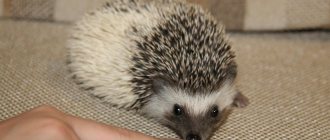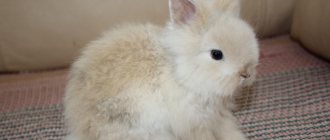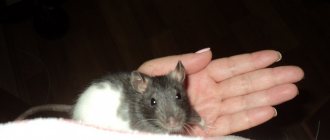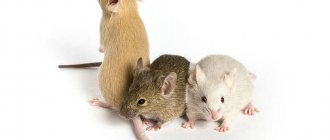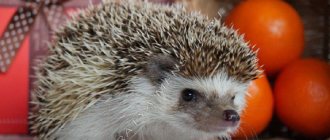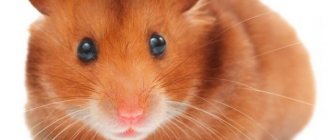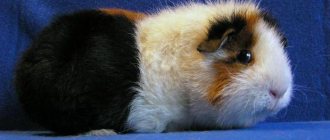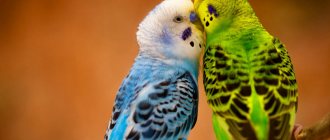- Wild animals
- >>
- Mammals
The African pygmy hedgehog is a chordate mammal. Translated from Greek it means “snake eater”. Recently, it has become fashionable to keep small rodents and other wild animals at home. Small in size and easy to care for, African pygmy hedgehogs have become full-fledged owners of many city apartments. Therefore, it is better to learn more about what kind of animals they are, how they should be treated, what to feed and how to care for them.
How to tame an African pygmy hedgehog
To tame a hedgehog, you will need calm and patience.
To tame an animal, surround it with affection and care. Have regular conversations with your pet, create a safe and calm atmosphere for him. The hedgehog has poor eyesight and a very sensitive sense of smell. He will distinguish you by touch, smell, voice.
Try to carefully lift your pet by the abdomen. If he starts using needles, do it with a blanket or towel - the hedgehog will stop panicking and calm down. If attempts to pick up your pet are unsuccessful, do not be nervous. Under no circumstances should you yell at the animal, much less throw it! Instead, be level-headed but persistent.
The hedgehog is a nocturnal animal. Therefore, try not to disturb him during the day, especially in the first days after acquisition. To help your pet get used to you as quickly as possible, try to hand feed him as often as possible.
Talk to your pet in a calm, gentle voice. Hold it in your arms daily for 15–20 minutes. If you follow simple recommendations, the hedgehog will soon begin to approach you.
Answers to popular questions
No. When hedgehogs stop drinking their mother's milk, their digestive tract stops processing lactose. Animals can drink this drink, but they always pay for it with diarrhea.
It is not included in the diet of animals in the wild, but they quickly become accustomed to its use. Sea or river fish is boiled, steamed without salt, thoroughly cleaned of bones and given 1 tbsp. l 1 time per week. To make it easier for your pet to get used to the new product, it is mixed with pre-boiled cereals and vegetables.
Can be used to feed animals. 0.5 tsp boiled in water without salt and sugar, allowed once a week instead of millet, rice, oatmeal.
A dwarf pet should not eat this fruit, just like avocado and pineapple.
No, cookies are also contraindicated for African pygmies. They cause diarrhea in animals.
Dairy products, including cottage cheese, sour cream, and cheese, are prohibited for representatives of the hedgehog species. The high fat content in them harms the sensitive liver of pets, and lactose intolerance leads to digestive upset.
As in most semi-finished and ready-made meat products for people, sausage can contain many flavors, dyes, preservatives and other harmful additives. They have a detrimental effect on the body of a miniature animal in a short period of time.
The insects sold at bait shops are often raised in manure. They can be carriers of helminth eggs and a source of pathogenic bacteria.
For hedgehogs, feed insects should be used, which are bred specifically to enrich the diet of domestic animals.
Cockroaches, mealyworms, crickets, and grasshoppers must be purchased at pet stores. They also sell baby mice, hamsters and other treats for pets.
Proper feeding is the key to a long life for African hedgehogs. It is not difficult to organize, and the reward will be the health and grateful affection of a unique dwarf pet.
Description and varieties
African pygmy hedgehogs come in a wide range of colors
The African pygmy hedgehog grows no more than 20 cm in length, and its weight is about 500 g. Individuals of this breed differ from each other in color.
Salt and pepper hedgehogs have black eyes, a mask and a nose. The number of black needles exceeds the number of non-pigmented ones. The skin around the ears and on the back is also black. There are spots of a similar color on the belly and paws.
Gray individuals have black eyes, a mask, and a nose. There are spots of the same shade on the belly and paws. The needles of this species are dark gray or dark brown. On the back and in the ear area, the color smoothly transitions from dark gray to black.
The brown variety of hedgehogs has light brown needles. The eyes are black, edged with blue. The mask of this individual is light brown in color. Chocolate nose. The belly and paws are evenly colored. The skin in the area of the back and ears has a pinkish tint with a gray tone.
The “chocolate” variety has brown needles. The eyes are black. The mask and nose are pale brown. The skin on the back and around the ears has a grayish tint. There may be barely noticeable spots on the abdomen and paws.
The “champagne” variety has light beige needles. Their mask is not expressed. The nose is pinkish. The back and ears are of a similar color. The eyes have a ruby tint. The belly and limbs of this individual are uniformly colored.
"Tsinakot" has half of the needles in a light brown tone, and the other part - pale beige. The mask practically does not appear. The nose is pink with brown specks. The eyes of this individual are black or ruby in color. The belly and paws are evenly colored. The skin on the back and around the ears is pinkish.
The “cinnamon” variety has a needle-like cover of a light brown tone. The mask practically does not appear. The nose is pinkish-brown. This individual has eyes of a black or dark ruby hue. The paws and belly are evenly colored. The skin on the back and ears is pink.
In addition to these varieties, any individual may exhibit a color anomaly:
- Pint - any part of the skin may not have pigmentation;
- Snowflake - 30–70% of needles become discolored;
- White - almost all needles are discolored.
A mammal can be born an albino. Animals with this abnormal coloration have white needles, pinkish skin and scarlet eyes.
Interesting Facts
It would seem that what could be special about ordinary hedgehogs? Acquaintance with them begins in childhood, with children's fairy tales. All kids know that hedgehogs need thorns to prick mushrooms and apples... And when they notice danger, hedgehogs almost instantly curl up into a tight ball. What else is known about hedgehogs?
Hedgehogs are recognized as the most ancient mammals. They inhabit almost all natural areas (except for heavily wetlands and permafrost). There are 17 species of hedgehogs in total.
Hedgehogs carry mushrooms and apples on their backs, impaling them on thorns, only in cartoons and children's books. In nature they don't do this.
Despite the fact that some species of hedgehogs can run fast (such as long-eared hedgehogs), they practically do not hunt mice, since even the fastest members of the family cannot catch up with a mouse.
During the winter, hedgehogs hibernate. In order to safely survive the winter in a dormant state, the animal must weigh at least 500 g. The temperature of the “home” where hedgehogs spend the winter does not fall below zero even in severe frosts. In the animal itself, the body temperature approaches 0, and the pulse drops from 170 beats per minute to 5. During hibernation, which lasts 128 days, the prickly animal loses up to 40% of its weight.
The hedgehog must find a “winter apartment” before the average daily temperature drops below +6. Otherwise, the animal may not survive the winter.
Hedgehogs have a developed sense of smell, which allows them to smell prey at a distance of several meters. It is the sense of smell and hearing that helps them navigate in space. Hedgehogs see poorly, although they can distinguish colors.
Photo: Joochen, pixabay.com
The spines of newborns are soft and hidden under the skin. They begin to appear on the surface only a few hours after birth. And by 3 weeks of age, little hedgehogs already have a full set of baby teeth. And at the age of 3.5 weeks, the prickly babies leave the nest and, obeying instinct, begin to follow their mother everywhere.
Contrary to popular belief, hedgehogs digest lactose extremely poorly, so they do not like milk; It’s better for them not to get carried away with this product.
Scientists consider it an amazing fact that hedgehogs have immunity to viper venom, although hedgehogs do not specifically hunt these reptiles. They carry prickly animals and other toxic substances. In particular, they are able to feed on poisonous insects without harm to their health. The substance erinacin protects hedgehogs from snake venom. However, a hedgehog may not survive a large number of snake bites in a row.
Hedgehogs are easily tamed and get along well with other pets.
Being insectivores, hedgehogs destroy a large number of insects, including pests. Therefore, gardeners should treat hedgehogs as neighborhood helpers.
An adult hedgehog has about 10,000 needles. They are replaced once every 3 years.
It turns out that you can find a number of interesting facts about long-known animals that make you look at “old acquaintances” in a new way.
Home page / Animals / Articles / What is unusual about ordinary hedgehogs?
The article was published in the issue of November 20, 2020
Pros and cons of keeping a pygmy hedgehog
African hedgehogs are smart and energetic, but do not get along well with other animals.
Keeping an African hedgehog at home has many advantages:
- People who breed these animals claim that the hedgehog can relieve fatigue and even lower blood pressure;
- Hedgehogs are very smart creatures. They can quickly get used to their owner and become attached to him;
- The African pygmy hedgehog can be easily accustomed to the regime of eating, resting and communicating with the owner;
- The animal does not require much time to care for. It is enough to keep the cage clean, sometimes wash the pet and trim its claws;
- Hedgehogs very rarely make sounds. If this happens, then they are practically inaudible;
- The hedgehog has very compact dimensions. There is a place for it even in the smallest apartment;
- Since the animal lives in a cage, it will not damage your wallpaper, furniture and other valuables;
- Hedgehogs do not need to be walked. They relieve themselves in a certain corner of the cage;
- African pygmy hedgehogs are unpretentious in food. They can even eat regular cat food.
However, despite so many positive aspects, keeping a hedgehog also has its disadvantages:
- If you often let your pet out of the cage, you will have to collect needles around the apartment;
- The hedgehog is a nocturnal animal; it is not recommended to place its cage in a room where people sleep - it will interfere;
- The hedgehog has a highly developed hunting instinct. If there are other pets in the house, this character trait can cost the hedgehog his life;
- Not all veterinary clinics will be able to provide assistance to the African pygmy hedgehog. This is due to the fact that this animal is not particularly common in our country.
Many people may wonder if an animal has a foul odor. If you keep the animal's cage clean, and also monitor its health and proper nutrition, there will be no repulsive odor.
Diseases
Hedgehogs are prone to many diseases, including cancer and Wobbly Hedgehog Syndrome (WHS). Some symptoms of WHS resemble those of multiple sclerosis in humans, so the condition in animals can be compared to what patients with multiple sclerosis experience. These include the inability to move normally, tremors of the limbs, staggering when walking, etc. A possible cause of WHS is a genetic defect that allows the virus to attack the hedgehog’s nervous system.
The nose can exhibit a variety of alarming symptoms, especially respiratory illnesses such as pneumonia. In many cases, the form of pneumonia that affects hedgehogs is bacterial in nature. When acted quickly, antibiotics can have a very positive effect. Observable signs include blisters, excessive mucus production, or persistent sneezing.
Care and maintenance at home
In order for your pet to live as long as possible, you must follow a number of rules and recommendations.
What to feed
Insects are a real delicacy for a hedgehog
The hedgehog is a predatory animal. The best food for him is insects and meat . Specialized stores sell food. But it is still better to give preference to natural products.
It is recommended to feed the hedgehog boiled or steamed meat. For example, 1 tbsp. spoon of beef, chicken, turkey. The meat product must be finely chopped or minced before feeding. You can also give your pet chicken necks, stomachs, liver, etc. One serving requires 1–2 units of offal. Once a week, your pet can be given boiled or steamed fish.
Please note: any meat, poultry and fish should not contain salt and spices!
Among insects, hedgehogs prefer crickets and zofobus. But this food is quite fatty. Therefore, it can only be given a couple of times a week. The pygmy hedgehog is also fed with grasshoppers, mealworms, caterpillars, marbled cockroaches, and locusts.
The hedgehog will not refuse vegetables either. He loves zucchini, carrots, green beans, asparagus, pumpkin, cucumbers, broccoli, spinach, and bell peppers. Among fruits and berries, the hedgehog prefers apples, pears, bananas, peaches, watermelon, cherries (always pitted), strawberries, blueberries, raspberries, blueberries and kiwi.
You can diversify your pet's diet with a chicken or quail egg. It can be given in cool and raw form. The hedgehog also loves baby food.
Hygiene and bathing
Bathing an African pygmy hedgehog is a must. It is necessary not only to eliminate unpleasant odors, but also to remove dirt and parasites. Bathing is always a huge stress for the animal. The thorns take a long time to dry, and your pet can get a bad cold (especially in cold weather). That is why it is recommended to perform the procedure no more than 1-2 times a month. You cannot bathe weak, sick, or unadapted animals, otherwise you can cause irreparable harm to your prickly pet.
To perform hygiene procedures, fill a basin with approximately 5 liters of water. Her temperature should not be higher than 34.8 degrees. It is necessary to immerse the animal into the water slowly, lightly holding it by the upper part of the body. First of all, you need to thoroughly wash the paws and belly. After that, proceed to the back. The needles can be cleaned with baby shampoo and a soft toothbrush. Make sure that water does not get on the muzzle. After bathing, the animal must be wrapped in a warm towel. The hedgehog should dry naturally. Protect your pet from drafts.
Video: African hedgehog bathes
Diseases and treatment
African pygmy hedgehogs are susceptible to a wide range of diseases.
If they are well maintained, as a rule, hedgehogs rarely get sick. But you still need to know what problems you may encounter and how to treat them.
Pneumonia. This disease can occur as a result of hypothermia. The animal refuses food, often licks its nose, sneezes, and coughs. Breathing becomes difficult, characteristic clicks are heard. This pathological condition is treated with antibiotics.
The pet needs to be shown to a doctor. If this is not possible, veterinarians recommend treating the animal with Ceftriaxone or Catozal. To eliminate a runny nose, you can use saline solution to rinse the nose, children's "Farmozolin" or "Maksidin". The antibiotic is injected intramuscularly into the thigh. "Catozal" is applied to the fold of skin on the back.
Gastrointestinal disorders. The feces of the African hedgehog are elongated and approximately the diameter of a pencil. The color of the discharge in a healthy animal is dark brown. If there is mucus or bile in your pet's stool, this means that the hedgehog has impaired digestion. This often happens due to the introduction of new foods into the diet. Just exclude them from your diet and watch your stool. If nothing has changed within 2-3 weeks, consult a doctor. The animal may have an infection. If the color of the stool is healthy, but it resembles cow pats, it is necessary to cleanse the gastrointestinal tract. Cockroaches will help you with this. If you have diarrhea, make sure your pet drinks plenty of water. If he refuses, it is necessary to inject saline solution subcutaneously. To treat the stomach, you can use Nifuroxazide. If diarrhea does not go away for more than 2 days, consult a doctor.
Wounds, scratches, fractures. Wounds and scratches should be washed with hydrogen peroxide. After this, the damage must be treated with Chlorhexidine. Then you should wait a little and lubricate the wound with Levomekol. For serious injuries, only a veterinarian can help. Fractures usually require amputation.
Fungus. The animal's needles and fur fall out. The skin becomes crusty and peels off. In this situation, it is recommended to use Imaverol. A cube of medicine requires 50 cubes of water. Spray your pet with this solution 3 times a day.
Ticks, worms. When infected with a tick, scratches and wounds will appear on the animal's body. With worms, the animal loses weight even with a good appetite. There is mucus and bloody discharge in the stool. In this case, Stronghold, Frontline, and Advocate help. The exact dosage is described in the instructions.
Vaccination
African pygmy hedgehogs are treated only for external and internal parasites. These pets are not vaccinated; there are no special vaccines for them. In addition, animals have a weak liver, and any vaccination can be fatal or shorten their life several times.
Selecting a cage and accessories
The hedgehog needs to be provided with a sufficient level of comfort in the cage.
The animal's cage should be spacious, the bottom size should be at least 60*60 cm . It must be continuous. The distance between the rods should not be too large. The animal can crawl through them and escape, or get stuck between them.
Do not purchase multi-level cages for pygmy hedgehogs!
A running wheel must be placed in the cage. It must be solid, with a diameter of at least 28 cm. Depending on the nature of the animal in the cage, he needs to make a shelter. For a sociable hedgehog, you can simply lay a soft towel or blanket. A shy pet needs a house.
You need to put a food bowl and a drinking bowl in the cage. The bowl should be heavy so that the pet does not roll it around the cage. It is best to choose a nipple drinker.
Many hedgehogs love to play. Cat toys are perfect for them - for example, a ball with bells inside or tunnels.
Features of feeding
African pygmy hedgehogs are carnivores. Therefore, the best food for them will be insects and meat. Of course, African pygmy hedgehogs will not refuse super-premium dry cat food, but they will still prefer natural food.
It is recommended to feed spiny animals turkey, chicken or beef. African pygmy hedgehogs should receive approximately 1 tablespoon of boiled, ground or finely chopped meat per feeding. It is also recommended to diversify the animal’s diet with offal, fish, eggs, vegetables and fruits.
African pygmy hedgehogs will not refuse insects either. True, crickets and zoophobes are considered very fatty food. Therefore, they are allowed to be given to prickly animals no more than once a week.
In order for African pygmy hedgehogs to remain healthy and active longer, onions, garlic, spices, salt, sweets, dried fruits, seeds, nuts, exotic fruits, milk and fermented milk products are excluded from their menu.
Breeding
Breeding African pygmy hedgehogs is a very important step. Initially, carefully weigh the pros and cons. You should have enough free time to care for your pregnant hedgehog and babies.
How to determine gender
To determine the sex, hold the hedgehog in your arms so that its belly is visible. In females, the genitals are located next to the anus. In males, they are located at a distance of approximately 1 cm from the anus in babies and 2–2.5 cm in adults.
Mating
For mating to be successful, the hedgehogs must be in the same age category
Hedgehogs become sexually mature at 5.5–6 weeks. Animals should not have inbreeding until at least the 3rd generation, so babies must be separated by gender in advance. Weak and sick hedgehogs cannot be bred.
A young male cannot be mated with an adult female. Due to inexperience, he can cause aggression and be bitten as a result. Mating can be done at 5.5–6 weeks, not earlier.
A female can become pregnant before 5.5 weeks. This cannot be allowed. She may not bear offspring or refuse to feed the cubs. A female should not be allowed to mate for more than 11 weeks if she has never given birth. Fused pelvic bones can complicate childbirth and lead to the death of a hedgehog.
Mating takes 6–7 days. There is no point in keeping animals together any longer. If mating does not occur, place the hedgehogs for a week, and then connect them again.
Males can be bred every 2 weeks. Female - no more than 2 times a year. Otherwise, she will kill her hedgehogs.
Pregnancy
Pregnancy in hedgehogs lasts 34–36 days. In a couple of weeks, the female gains 10–50 g in weight. On the 25th day, it is already clear that the hedgehog is pregnant: she becomes rounder, and her behavior also changes. She begins to take care of herself, her gait slows down.
How to care for newborn hedgehogs
It is better to touch newborn hedgehogs only with a cloth.
In the first days of the babies' lives, the female behaves very nervously. She needs to be placed in a separate cage and ensure complete rest. Otherwise, she may refuse to feed the offspring or even kill them.
It is better not to touch small hedgehogs - the female may refuse them if she smells a person . But sometimes situations arise when holding a baby is simply necessary. In this case, wash your hands thoroughly with plain water, put on clean clothes and try to avoid any odors. When you pick up the baby, distract the female. The same must be done when you put it back.
For the first 2 weeks, hedgehogs eat only mother's milk, then she begins to bring them other food. By 2 months, hedgehogs are no longer completely dependent on their mother.
How much does it cost to keep an African hedgehog?
On the Russian market, the cost of pygmy hedgehogs with a regular color from a nursery starts from 6 thousand rubles. What affects the price? For a large cage you will have to pay about 3 thousand rubles. For a silent wheel they will ask for 1.5 thousand rubles, if made to order, delivery from the USA will cost about 75 dollars. A package of food for pet hedgehogs for half a month costs 600 rubles.
In addition, the price is affected by the gender, type and color of the pet. So, a domestic hedgehog with a classic color will be cheaper. For rare colors they will ask for more. For each hedgehog in a specialized nursery, a certificate is issued, which indicates the origin and instructions on the contents.
On the Internet, nurseries have posted prices for healthy hedgehogs with pedigrees. The pets are tame, socialized, and do not experience fear when they see dogs, cats, or children.
- Pygmy hedgehog Bendetto (male) – 10 thousand rubles.
- Dwarf hedgehog Gedeminas (male) – 12 thousand rubles.
- Hedgehog Hans (male) – 10 thousand rubles.
- Hedgehog Dionysus (male) – 12 thousand rubles.
- Belle the Hedgehog (female) – 15 thousand rubles.
Training and playing with your pet
Little prickly Africans are highly trainable
The African pygmy hedgehog is highly trainable. For example, you can create an obstacle course for him with treats laid out on it - this way the pet will train on its own.
If you exercise your hedgehog regularly, it will learn its name and respond to it . You can also teach your pet the commands “stand” and “come.” To do this, lure the animal towards you with the words “come to me” with some kind of treat. After this, tell him to “stop” and block the path with your foot or book. The hedgehog will quickly understand what needs to be done and will follow commands.
The most important thing during training is not to shout or scare the animal. Otherwise it will be afraid and refuse to do anything.
Diseases
Unfortunately, even the decorative breed of hedgehogs is susceptible to disease. Here are the most common diseases of African hedgehogs:
- Endo- and ectoparasites;
- Respiratory tract infections;
- Liver dysfunction;
- Obesity;
- Nervous disorders;
- Heart dysfunction;
- Dropping needles;
- Dental diseases;
- Ingrown toenails;
- Cancer;
- Kidney dysfunction.
To reduce the risk of parasite infection, preventative treatment should be carried out from time to time. Some diseases can be avoided with a balanced diet.
If there is any change in behavior, feces, urine, or wakefulness, you should contact a veterinarian who specializes in hedgehogs - medications for similar diseases in other animals can be dangerous for the African pygmy pet.
How to name a pet
When choosing a name, you can only be limited by your own imagination.
You can call a hedgehog by any nickname that suits your liking. For example, start from the thorns of a pet (Cactus, Kolyuchkin, Needle, etc.) or transform the word hedgehog (Ezhana, Ezhinka, Hedgehog, etc.).
You can name a hedgehog based on its external features (White, Snowflake, Coal, etc.). In other words, you can come up with a huge number of nicknames for a prickly pet. Just use your imagination.
The African pygmy hedgehog is an ornamental animal that was bred specifically for indoor living. The hedgehog is quite unpretentious in food, has a small size, and requires a minimum amount of time. In addition to these positive aspects, the pet is highly trainable and can become a loyal friend to its owner.
Types of hedgehogs
The hedgehog family is represented by two main subtypes: true and rat. The latter are also called hymnurs. Although previously a large number of different animal species lived on Earth, now their number is only 23. Of these, the most interesting can be identified.
Common hedgehog
Common hedgehog
The most common type of hedgehog, inhabiting Europe, Russia and many other territories. Individuals grow up to 35 cm in length and weigh no more than a kilogram. The needles of an adult animal have a dark base and a light top; their size does not exceed 3 cm. Most hedgehogs have a dark brown or gray color. They choose forests as their place of residence.
long eared hedgehog
long eared hedgehog
This species is easily distinguished by its large ears, the length of which is 4-5 cm. Most individuals grow up to 25 cm, and their weight varies from 400 to 450 grams. The animal's spines extend up to 2 cm. The animal lives in Asia, India, Africa and Russia, preferring deserts and plains with a dry climate.
Interesting fact: long-eared hedgehogs are quite shy. When they see danger, they immediately curl up into a ball or try to run away.
Eastern European hedgehog
Eastern European hedgehog
From the name it is easy to guess that the species lives in Eastern Europe. The animal is large in size compared to other hedgehogs: its length reaches 40 cm and its weight is 1.3 kg. Distinctive features are light fur and a clearly defined head against the background of the rest of the body.
African pygmy hedgehog
African pygmy hedgehog
The size of the individual varies from 16 to 23 cm, weight does not exceed 700 g. The coat may be gray or brown. Females of this species grow larger and have more strength than males. Hedgehogs live in Africa, preferring arid areas. They feed exclusively on insects, spiders and scorpions.
Long-spined hedgehog
Long-spined hedgehog
The species boasts long spines that can grow up to 4.5 cm. This hedgehog is also called “bald” due to the lack of spines on its forehead. The beast lives near the mountains and in the plains. You can meet it on the Arabian Peninsula, Iran and Kazakhstan. The animal eats insects and other creatures.
Ethiopian hedgehog
Ethiopian hedgehog
It has a white belly and dark coloring on the face and limbs. The hedgehog grows up to 27 cm, its weight does not exceed 750 g. The animal lives in Tunisia and Egypt, prefers a dry climate and plains. It eats insects and other living creatures.
Daurian hedgehog
Daurian hedgehog
It chooses to live in the steppe, where it feeds on berries and living creatures. It is found in the territories of Mongolia, China and Transbaikalia. Most often, individuals wear a dark brown or gray color and sand-colored needles.
Ordinary gymnura
Ordinary gymnura
The most common type of rat hedgehog. Individuals grow up to 40 cm in length, and body weight can reach up to 2 kg. The animal has a long tail, the size of which can be 30 cm. In most cases, the color combines white and black. Ginura lives in Asia. The animal's diet consists of insects and small cold-blooded animals.
“Hedgehog-hedgehog, your Seryozhik is coming to you!”
As it turned out when reading forums, very, very many couples, without further ado, call each other’s causal places the common “baby/baby”, “boy/girl”, “buddy”, “small/small”, “mink”, “cave” ", "fat boy", "faucet", "garazhik" and other touching kindergarten epithets. Depending on the presence and density of vegetation, nicknames can vary within one week from “bald” to “hedgehog”, then smoothly move to “fluffy” and back in the same order. Also leading the ranking are various analogies from the animal world: moreover, “buffalos” and “tigers” are found as often as “seals”, “elephants” and “leopards”.
In a few days
During the first day of their existence, babies continue to remain blind and deaf. But they grow quickly and very soon become completely different from what they were born with. Hedgehogs at a week old rapidly gain weight and weigh about 40 g. They start fussing and playing with their brothers and sisters, fighting both jokingly and seriously. This activity strengthens their muscles, promotes healthy muscle development and coordination of movements.
Babies make clicking noises and squeaks. These signals, the spectrum of which is very diverse, in natural conditions serve as signs for the mother, which helps her understand the condition of the children. Having reached 11 days of age, little hedgehogs learn to curl up into a ball. During this period, they should receive 3 milliliters of milk per feeding. It is necessary to keep their nest clean and change the litter regularly. And the temperature in the baby’s home should not fall below 35 °C. You cannot overfeed such pets. Hedgehogs have no sense of proportion and are capable of eating to death. And this is not an exaggeration at all.
Simple wire cutters
The most primitive device is very similar to ordinary scissors. Only one of its cutting surfaces is equipped with a small notch with a sharp edge. Using such a device is easy, provided you have some skill and experience. For young dogs, nail trimming is always stressful. They do not want to sit quietly, they strive to tear the paw out of the owner’s hands and in every possible way complicate the process. So Litbro.ru will not recommend such a gadget to novice dog breeders. The risk of causing serious physical injury to your pet is too great. Well, for experienced owners who have used similar tools more than once, nothing better can be desired. Cheap and very effective.
Cost – 35 – 72 rubles.
More advanced versions of hand cutters offer expanded functionality.
Although their main part, in the old fashioned way, is based on two cutting surfaces. Service additions imply only human convenience. Models with rounded ends, a container for cut claws and lighting have proven themselves very well. The fact is that some dogs have the habit of looking for clipped ends on the floor and eating them. Sharp, bent cuttings can damage the stomach wall and cause bleeding. A small “waste collection” effectively solves this problem.
Price – 636 rub.
Another gadget from the line of simple nippers has comfortable ergonomic handles that allow you to securely hold the tool while trimming nails.
This is important when the animal gets nervous and breaks out.
We pay attention to one more detail - the expansion spring. It fixes the cutting surfaces in the open state, which makes the operation somewhat easier.
Otherwise, the functions of the device duplicate all the features of its predecessors. To properly shorten claws, you must have the skill and achieve unquestioning obedience from your dog or cat.
Cost – 229.93 rubles.
Choosing a house
Before buying an animal, you need to take care of where it will live. A rabbit cage, as well as a glass or plastic terrarium, can serve as a house. The size of their bottom must be no less than 60 X 60 cm. The house must be closed from above, otherwise the hedgehog will run away. If you want it to be open, then the walls of the future home should have a fairly slippery coating, and their height should be more than 30 cm.
It is necessary that the bottom of the house is solid. A floor made of twigs is strictly prohibited, as the hedgehog’s small paws will always get caught in them. The distance between the rods should be small. Given the size of the animal as a child, it could easily escape or get stuck between them.
Character
Like other animals, each African hedgehog has its own personality. Each of the animals has a special character and manner of communication. For example, some of them prefer loneliness, while others become attached to people. If, however, the hedgehog is not very sociable, you need to try to win his favor. They love to be stroked and caressed.
When going to a pet store or nursery, you should choose exactly the animal that is willing to be handled, since taming it yourself is very problematic. Usually hedgehogs are peace-loving and affectionate creatures, but sometimes among them there are quite wayward natures. They may try to escape and begin to snort or bite.
An unusual animal, the African hedgehog, whose price varies from 4,500 to 5,000 rubles, will bring a lot of warmth, comfort and good mood to your home.
Diet
In the twenty-first century, there is no need to think about what to feed the African hedgehog. They eat good premium cat food
Just pay attention to the composition - it should not contain starchy products, such as corn or potatoes
These animals are also contraindicated:
- Dairy products.
- Dried fruits.
- Acid-containing foods: pineapple, citrus fruits, garlic, onions, etc.
- Avocado - a hedgehog can be poisoned by this fruit, so it is better not to risk it and not include it in the diet.
- Nuts and seeds in shell. It can injure your mouth or damage your teeth.
Keeping pygmy hedgehogs is simple and enjoyable. Such an animal can bring comfort to your home and become a real favorite for children and adults.
Temperature
As you know, the African pygmy hedgehog was bred specifically for keeping at home and simply does not exist in the wild. That is why they require more attention than other species of this animal. To create the most favorable conditions for a hedgehog’s life, the temperature in the room should be comfortable: during the day it should be about +22-25⁰ C, and at night – 2-5 degrees lower.
At lower temperatures, the animals hibernate. A way out of this situation may be to use a special heated mat. It is placed under the bottom of the house.
Reproduction
In the wild, when a male and a female meet, the former will court their partner for many hours, will snort and chirp, even growl, showing a warlike character. When the hedgehog is ready to mate, she will lower her quills and extend her hind legs.
At the moment of coitus, the male leaves a “wax” plug in the female’s vagina, which prevents repeated sexual intercourse and insemination by other hedgehogs. After copulation, the partners separate, and the mother carries and cares for the brood on her own. It can produce up to 2 litters per year.
It is easy to determine the sex of a hedgehog - males have a penis and foreskin located in the middle of the abdomen, females have a vagina, located near the anus.
The mating and sexual reproduction season is from October to March. Girls become sexually mature at the age of one year; pregnancy lasts about 34-39 days.
In one litter, the female gives birth to from 1 to 7 cubs, on average 3-4.
Newborn babies weigh about 10 grams. A few hours after birth, soft, white spines grow, dark ones grow on days 2-3, eyes open at 2-3 weeks, and already at 4-5 weeks they can leave the nest on their own.
At the age of 1.5 months, babies become independent.
Contraindicated products
African hedgehogs, the maintenance of which still requires some knowledge, are quite unpretentious. The most important thing is that their diet should consist exclusively of natural products that do not contain any harmful additives or impurities, since the health and well-being of the pet may be affected.
The following will list foods that are contraindicated for hedgehogs. First of all, the animal does not tolerate lactose well. That is why all dairy products must be immediately excluded from their diet. Various dried fruits and raisins usually stick to the larynx and get stuck in the animal's teeth. You should not give them avocado, as there are cases where hedgehogs were poisoned by this fruit. Pineapple is also on the list of prohibited foods. It contains acid that corrodes the delicate oral cavity of the animal. For the same reason, you should not give onions, garlic and citrus fruits to hedgehogs.
As for nuts and seeds, their shells can injure the animal and ruin its teeth. Also, you should not give him fast food, chips and chocolate. And cedar and tea tree oils should generally be kept away from them, because even their smell can be dangerous for this animal.
The African hedgehog, reviews of which indicate that keeping them is quite easy and pleasant, will become a favorite not only for children, but also for the whole family.
